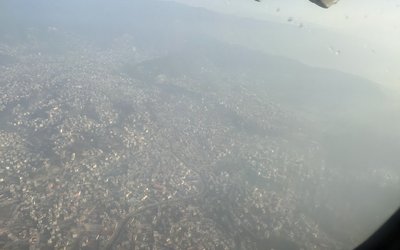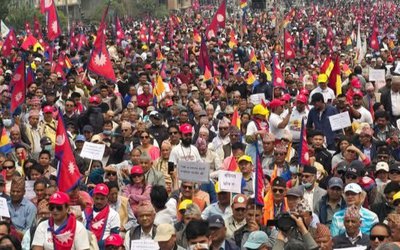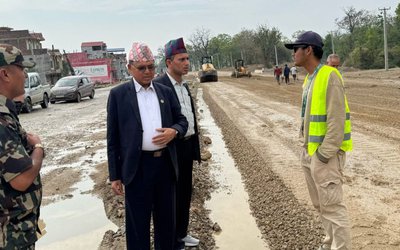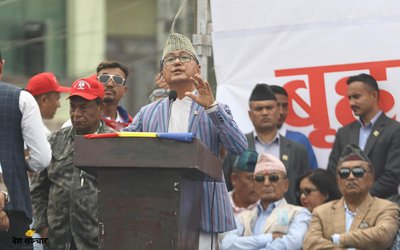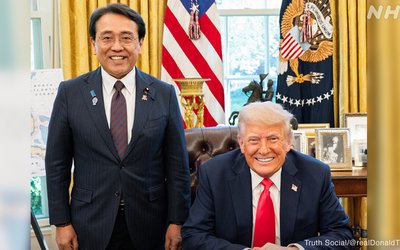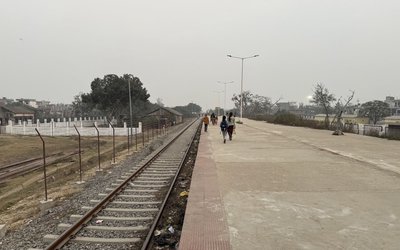Although modern engineering is an intrinsic part of the development enterprise, Nepali engineers as a collective have been surprisingly absent in the country's development discourse in recent years. One cannot imagine good development happening without good engineering – covering the entire sub-disciplinary spectrum from nanomaterials and heavier civil construction to agriculture and chemical engineering. However, it should be noted that bad engineering has contributed significantly to mal-development that ranges from poor planning to shoddy construction and shady dealings with corrupt politicians, civil servants and contractors.
The reputation of engineers in Nepal, if one went by the FM news this morning as this article was being written of CIAA focusing on corruption by engineers, is tainted. At one end, they are seen as the vanguards of corruption and at the other end of societal envy for that very reason! One just has to be present as a senior citizen at any match-making deal within the larger family circle and one can hear fulsome praise of the prospective bridegroom as an engineer with a good financial future ahead of him. My own experience with this misplaced value distortion within Nepali society goes back over three decades ago when I was a government engineer within the Ministry of Water Resources. Having put in my few years of fieldwork building electricity distribution lines within Kathmandu Valley and in Dandeldhura, I had opted to shift to more academic pursuits working with Canadian experts who were supporting the newly formed Water and Energy Commission. My father was then running a law firm from our Patan Dhoka premises and I used to come back from work and sit among the younger lawyers and waiting for clients to exchange news and view of the day.
One day there was this venerable-looking old gentleman client who was waiting for his appointment. When others introduced me to him as the big lawyer's son, he asked me if I was a lawyer too. I said, no, I am a water resources engineer; and he lighted up beaming and said that was very good, that I had a great future as a rich man. He then asked me which big hydro project I was with. I told him I was not with any project but was working in planning and studies. Slightly disappointed, he said, "Oh, so they have not given you any work yet, hunh?"
Changing societal misperceptions about engineering in society, upholding values of high engineering standards and being the watch-dogs checking impropriety within the profession both in the private and government sectors is the job of professional engineering societies. During the Panchayat period, there was only one Nepal Engineers' Association (NEA) and at the very start of my career, just before the National Referendum had been announced by King Birendra, I had the good fortune to be elected its executive member. Our Chair was the veteran engineer Indra Ratna Sthapit and he encouraged me to take up the editorship of its bulletin NEA News. Besides reporting on issues of engineering concern, we took up a task then new to Nepal – interviewing oldies in the field still alive to glean from them not just past history of our profession but also to learn of their struggles and successes. The idea was that it was up to the profession to not only to respect and keep alive the memory of the pioneers in our field but also to pass on their ideals and values to the younger members of the profession. Among those whose profiles and interviews we published were Surya Jung Thapa who built New Road after the 1934 earthquake, Pushpa Bhakta Malla Nepal's first mining engineer, and Kul Ratna Tuladhar who was Nepal's first chief engineer of its Public Works Department. The period around the National Referendum was indeed, to my mind, the golden period of social engagement by Nepali engineers.
Sadly, that exuberance in upholding professional dignity is absent today, not only in NEA but several other more specialized engineering associations that subsequently sprang up as NEA's social relevance and its standing as a strong ethical voice declined. The rot started shortly after the restoration of multiparty democracy in 1990 when even professional societies such as those of doctors and lawyers together with engineers, fractured along partisan lines. Elections for officeholders became rather bitter events that saw national-level party leaders shamelessly campaigning for their panels. And once elected, the office bearers did little to further medical, legal or engineering concerns but merely functioned as loyal party cadres hoping for plum rewards from their political masters. Indeed, the only activism one sees coming out of them is following political party instructions to release statements or to hold placards in party street rallies as members of PAPAD, a political alliance of professional bodies allegedly furthering peace and democracy (but not more specific professional concerns).
One would be hard-pressed to find NEA, the country's premier engineering association with thousands of members, discussing controversies surrounding Nepal's large engineering projects. One heard nothing from it about Arun-3; nor has it spoken about the fast-track road connection to the Tarai. (One would have expected a society of professional engineers to ask and explain to the public at large what is "fast" about a fast-track project: which engineering aspect actually works faster than normal and whether it is merely a gimmick to award contracts bypassing normal checks and balances and thus fostering corruption?) It was silent when the Tanakpur hydro project agreement with India raged, nor did it speak up during the subsequent Mahakali treaty that even saw the breakup of the UML party. Neither has one heard anything from it on the questionable Nijgadh airport project (especially now that tourism, as practiced over the last decades, will not see any upturn for years, leaving even our Tribhuban airport under capacity), or the US MCC 400kV transmission line and road expansion project, or the massive environmental destruction brought about by badly gouged out hillsides by haphazard "bulldozer terrorism" road building. In short, it has stayed party loyal and social consciousness dead; and this makes this life member of NEA very sad. Democracy is not about partisan loyalty: it is about constantly questioning those in power.
It is not that engineers as individuals or small collectives have not raised their voices; and it does not mean that everyone should agree on everything. When the fast-track road controversy was going on, the late Birendra Keshari Pokhrel (former roads department chief engineer and member of Panchayat parliament) and his colleagues did raise their voice and argued that it makes much more sense to go for a railway track instead. The Arun-3 campaign was a milestone in professional activism because it was engineers themselves who went public with what was wrong with the project. In India's Ganga plains, it is engineers like DK Mishra who chose activism against bad flood control projects which have exposed the true cost of bad engineering that has mired Bihar in rural poverty. In the medical sector in Nepal, one individual Dr. Govinda KC has succeeded in arousing the conscience of the nation where the Nepal Medical Association has failed.
All engineers will not easily come to a single consensus because complex, intertwined economic, social and environmental issues rarely see unanimous agreement anywhere in the world. But an open public debate would help layout the hidden disbenefits, clarify the costs of decisions, and allow those holding public office to figure out what appropriate amelioration packages can be cobbled up to address mainly issues of equity and justice.
It was therefore a pleasant surprise when I got a call from the new Chair of the Society of Electrical Engineers (SEEN) that it was holding a zoom debate on how to promote hydroelectricity consumption in Nepal on 18th July. As a life member of SEEN, I had been as upset with SEEN as with NEA for its silence on matters of professional and public interests. Whether Nepal should develop its hydropower for export or for giving Nepali commerce and industry a strategic edge has become a matter of public policy debate; and it was good of SEEN to come out of its comatose vegetative state and engage publicly. One just hopes NEA as well as other engineering associations such as that of mechanical engineers (SOMEN), of public health engineers (SOPHEN), of architects (SONA) and others will follow suit and emerge into active public life. That burden is now on the shoulders of the younger generation of Nepali engineers, much as it was on that of this writer's generation four decades ago.
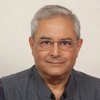
Dipak Gyawali
Gyawali is Pragya (Academician) of the Nepal Academy of Science and Technology (NAST) and former minister of water resources.
- Re-Thinking Democracy: Why South Asians Are worried
- Mar 17, 2025
- Nepal’s Governance Mired In Endemic Corruption
- Feb 20, 2025
- What Might The Age Of Trump Look Like?
- Jan 22, 2025
- Kathmandu Dialogue With Dugin
- Dec 25, 2024
- Bioregionalism Satsang
- Sep 27, 2024


